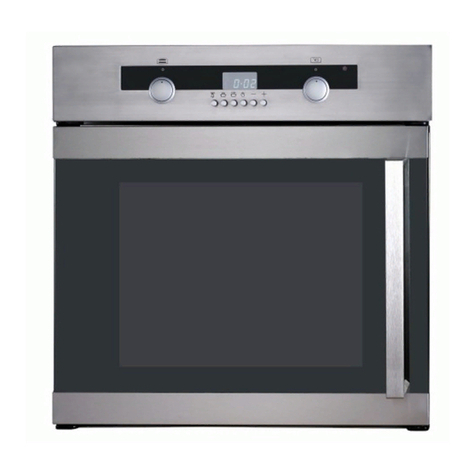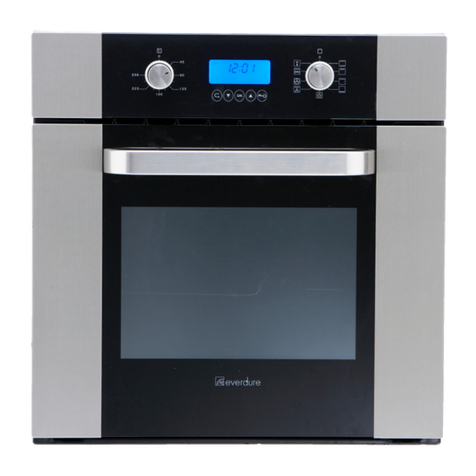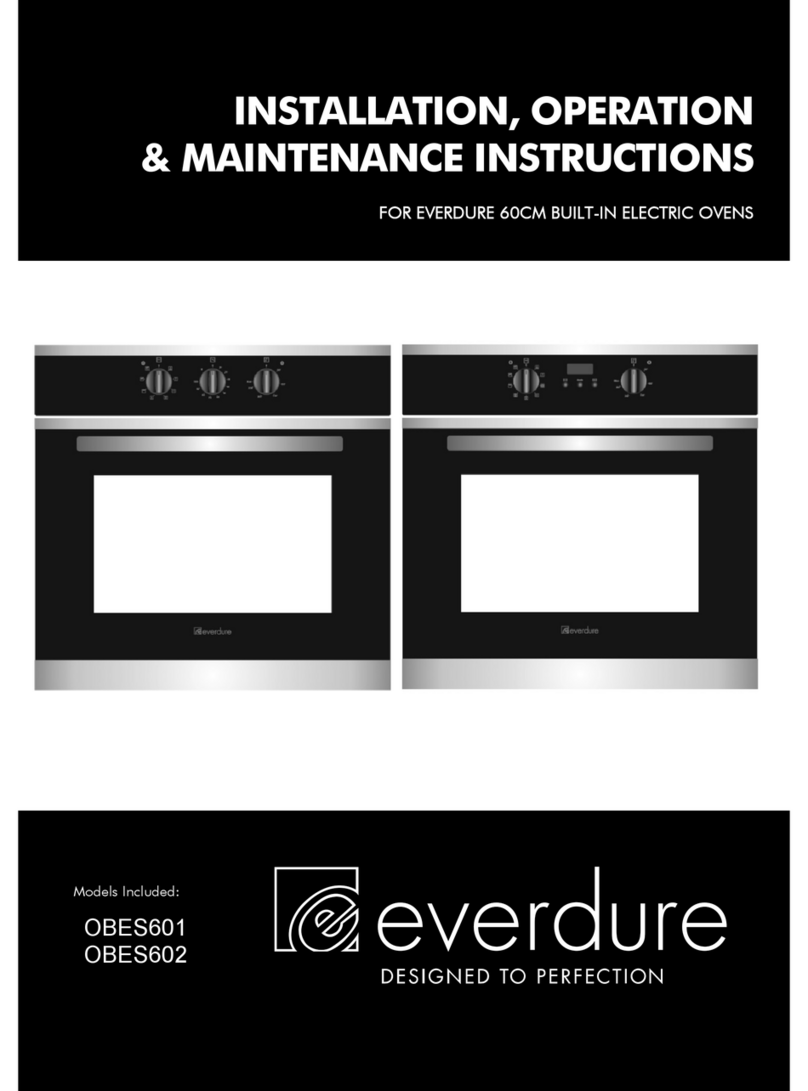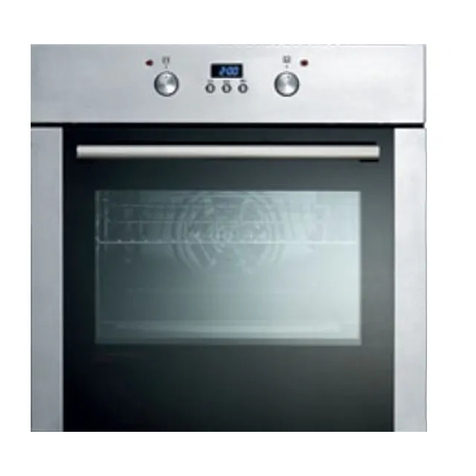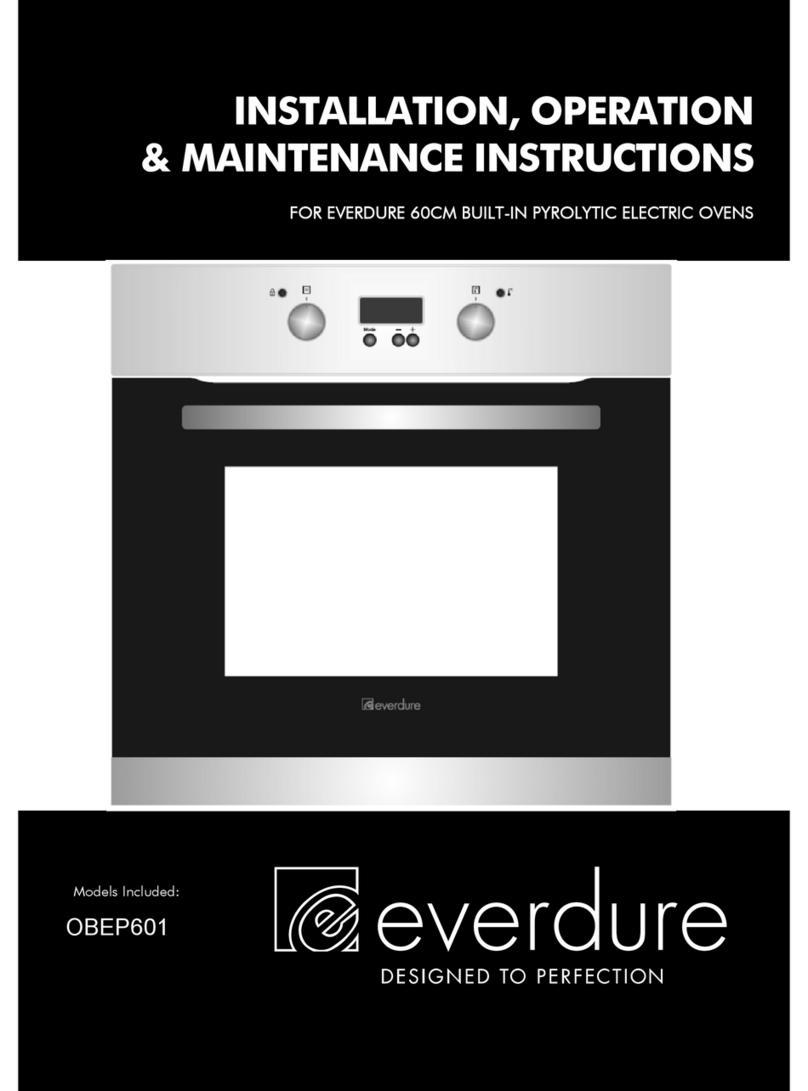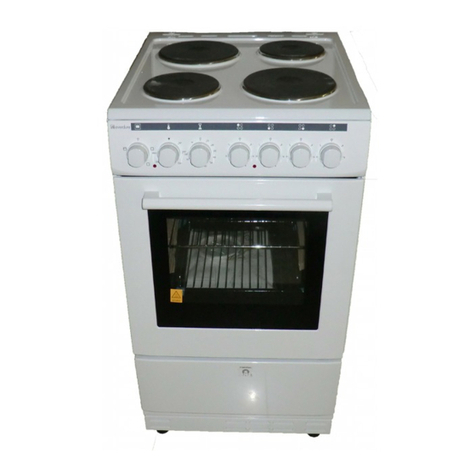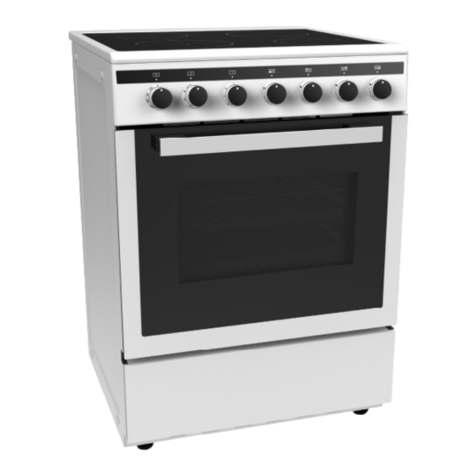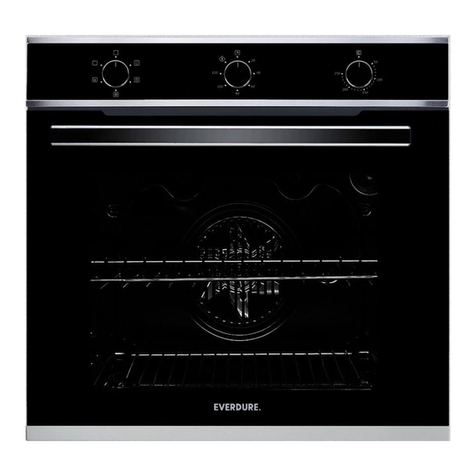DESIGNED TO PERFECTION
IMPORTANT SAFETY INSTRUCTIONS
IMPORTANT:Read the assembly instruction section and safety precautions of this booklet carefully before removing
the contents of this carton. To maintain the efficiency and safety of this appliance, always call the
Service Centre for warranty & service issues. Always use original spare parts.
1. This appliance is intended for non-professional use within the home.
2. Before using the appliance, read the instructions in this owner’s manual carefully, since you should find all the instructions you require to ensure
safe installation, use and maintenance. Always keep this owner’s manual close to hand since you may need to refer to it in the future.
3. After removing the packaging, check that the appliance is not damaged. If you have any doubt, do not use the appliance. Contact your nearest
Service Centre of the store where you buy the appliance. Never leave the packaging components (plastic bags, polystyrene, nails, etc) within the
reach of children since they are a source of potential danger.
4. The appliance must be installed only by a qualified person in compliance with the instructions provided. The manufacturer declines all responsibility
for improper installation which may harm persons and animals and damage property.
5. This appliance designed to be used by children aged above 8 years. Person with reduced physical, sensory or mental capabilities or lack of
experience and knowledge shall be under supervision and instructed concerning use of the appliances in a safe way and understand the hazards
involved when using the appliance.
6. The electrical safety of this appliance can only be guaranteed if it is correctly and efficiently earthed, in compliance with current regulations on
electrical safety. Always ensure that the earthing is efficient if you have any doubts call in a qualified electrician to check the system. The
manufacturer declines all responsibility for damage resulting from a system which has not been earthed.
7. Check that the electrical capacity of the system and sockets will support the maximum power of the appliance, as indicated on the rating label. If you
have any doubts call in a qualified technician.
8. When the oven is first used an odour may be emitted, this will cease after a period of use. When first using the oven ensure that the room is well
ventilated e.g., open a window or use an extractor fan and that persons who may be sensitive to the odour avoid any fumes. It is suggested that any
pets be removed from the room until the smell has ceased. This odour is due to the temporary finish on oven liners and elements being burned off.
9. Ensure that the appliance is switched off before maintenance by switching off the main switches and turning all knobs to OFF position.
10. The openings and slots used for ventilation and dispersion of heat on the rear and below the control panel must never be covered. Carefully read
the part of this manual where installation procedures are explained, and make sure the relevant conditions are satisfied
11. The user must not replace the supply cable of this appliance. Always call an authorised service centre in the case of cable damage or replacement.
12. This appliance must be used for the purpose for which it was expressly designed. Any other use is considered to be improper and consequently
dangerous. The manufacturer declines all responsibility for damage resulting from improper and irresponsible use.
13. Electrical connection must be made as per local wiring rules and regulations. Do not touch the appliance you’re your hands or feet are wet and do
not use the appliance bare footed. Never allow the mains cable to be stretched, pulled or damaged if the appliance is moved for cleaning etc and
do not disconnect the power cord with extreme force. Do not use the appliance if the mains cable is damaged, consult a qualified electrician. Do not
allow the appliance to be used unsupervised by children or persons unfamiliar with it.
14. Always switch off the electrical supply to the appliance and allow it to cool down before carrying out any cleaning operations etc.
15. Danger of fire: do not store items on or against the appliance surfaces.
16. To avoid accidental spillage do not use cookware with uneven or deformed bottoms on the burners or on the electric plates.
17. Special care should be taken when using chip pans etc. in order to avoid splashing or spillage of hot oil. They should not be used unattended since
over heated oil may boil over and could also ignite.
18. Parts of this appliance, cooking surfaces, retain heat for considerable periods after switching off. Care should, therefore, be taken when touching
these areas before they have completely cooled down. When the appliance is in use the heating elements and some parts of the oven door become
extremely hot. Make sure you don’t touch them and keep children well away.
19. Never use flammable liquids such as alcohol or gasoline, etc. near the appliance when it is in use.
20. When using small electrical appliances near the hob, keep the supply cord away from the hot parts.
21. Make sure the knobs are in its “OFF” position when the appliance is not in use. Also make all potentially dangerous parts of the appliance, safe,
above all for children who could play with the appliance.
22. If you use the power cable for single phase, the minimum cross-sectional area is 10mm².
23. Do not place heavy objects in or on these appliances, or use for storage, or let children play or swing from the doors. These appliances are
designed for cooking food only. Do not exceed 20kg on top of this appliance.
24. Do not modify this appliance. This appliance is not intended to be operated by means of external timer or separate remote control system.
25. Do not use harsh abrasive cleaners or sharp metal scrapers to clean the oven door glass as they can scratch the surface, which may result in the
glass shattering. Clean the glass using warm damp cloth and dry it with a soft cloth.
26. If any cracking is noticed on the oven door, turn the appliance off immediately and call your Authorised Service Centre.
27. If this appliance is installed on a base, measures must be taken to prevent the appliance from slipping from the base.
28. The appliance must be installed and put in operation by an authorised technician under the conditions provided by the manufacturer in this manual.
The manufacturer cannot be held responsible for any damage that might occur due to faulty installation.
29. All cabinetry and materials used in the installation must be able to withstand a minimum temperature of 50°C above the ambient temperature of the
room it is located in, whilst in use. Certain types of vinyl or laminate kitchen furniture are particularly prone to heat damage or discolouration at
temperatures below the guidelines given above. Any damage caused by the appliance being installed without adhering to the temperature limits set
out above will be the liability of the owner. Damage can occur to bench tops if pots and pans are allowed to overlap any nearby bench tops.
30. The values indicated in the cooking guide sections are values obtained in a laboratory environment according to relevant standards. These values
may vary according to the usage and environmental conditions of the product.
31. Do not leave the cooker while cooking with solid or liquid oils. There may be flaming up on conditions of extreme heating. Never pour water onto
the flames occurring from oil. Immediately turn the cooker off and cover the saucepan or fry pan with a lid or fire blanket in order to smother the
flame.
32. Do not leave anything on the door when they are open; you may unbalance the product or break the griller door.
33. For New Zealand: If this cooking range is to be connected to a new or upgraded electrical installation, then it must be connected by a supply cord
fitted with:
- An appropriate rated plug that is compatible with the socket-outlet fitted to the final sub-circuit in the fixed wiring that supplies this cooker.
- An appropriate rated installation male connector that is compatible with the installed female connector fitted to the final sub-circuit in the fixed
wiring that supplies the cooker.
3
